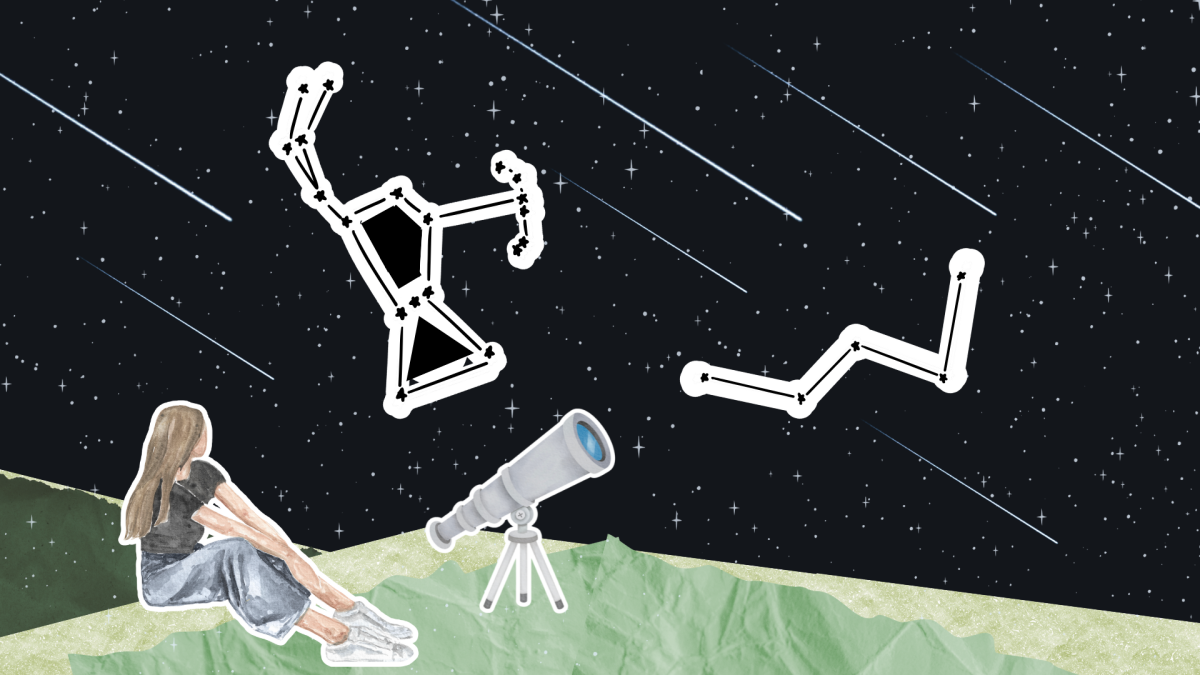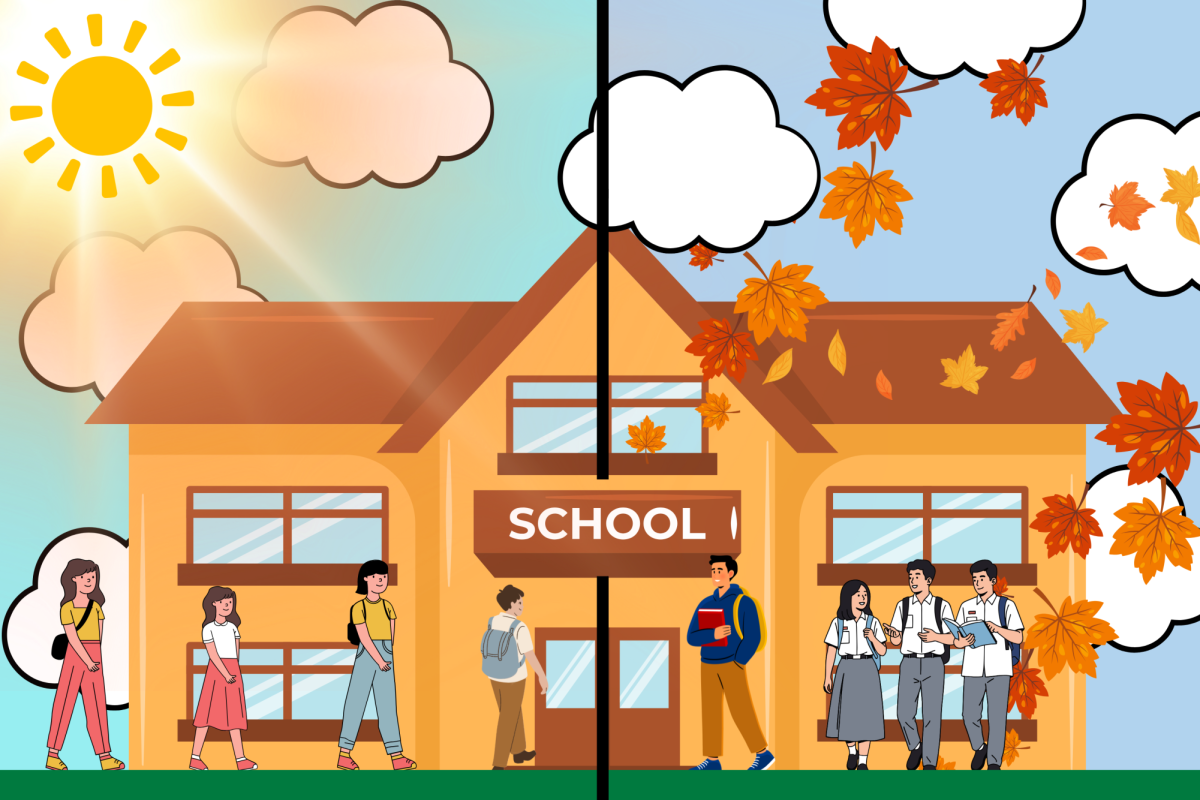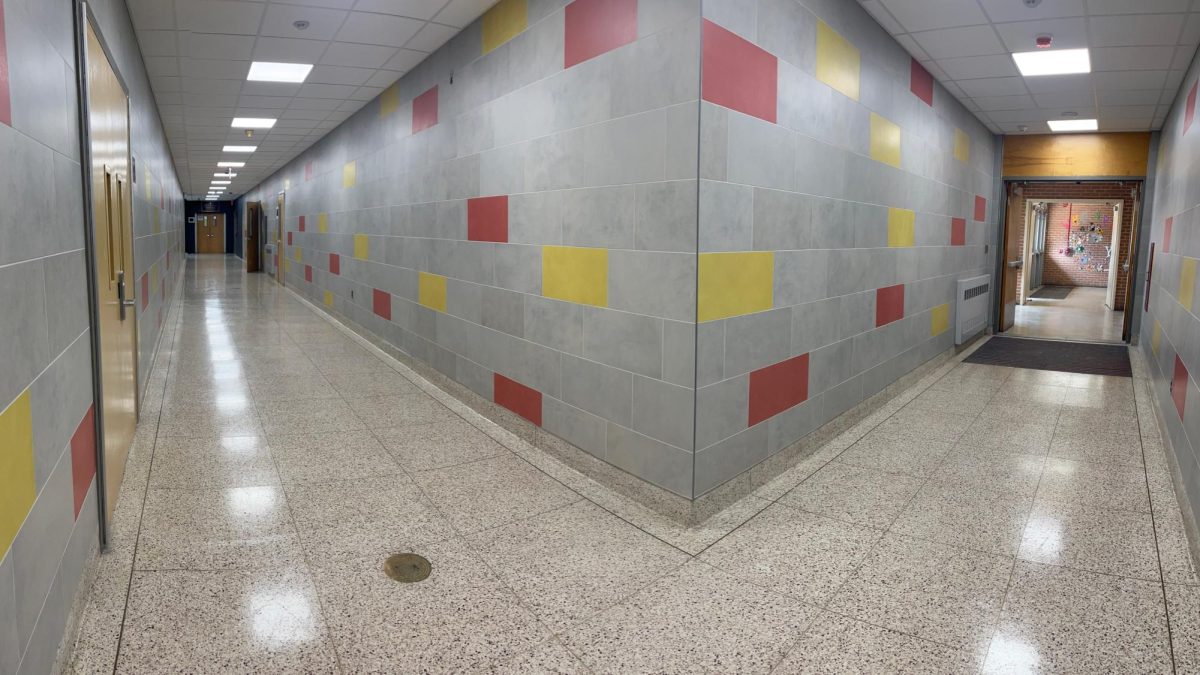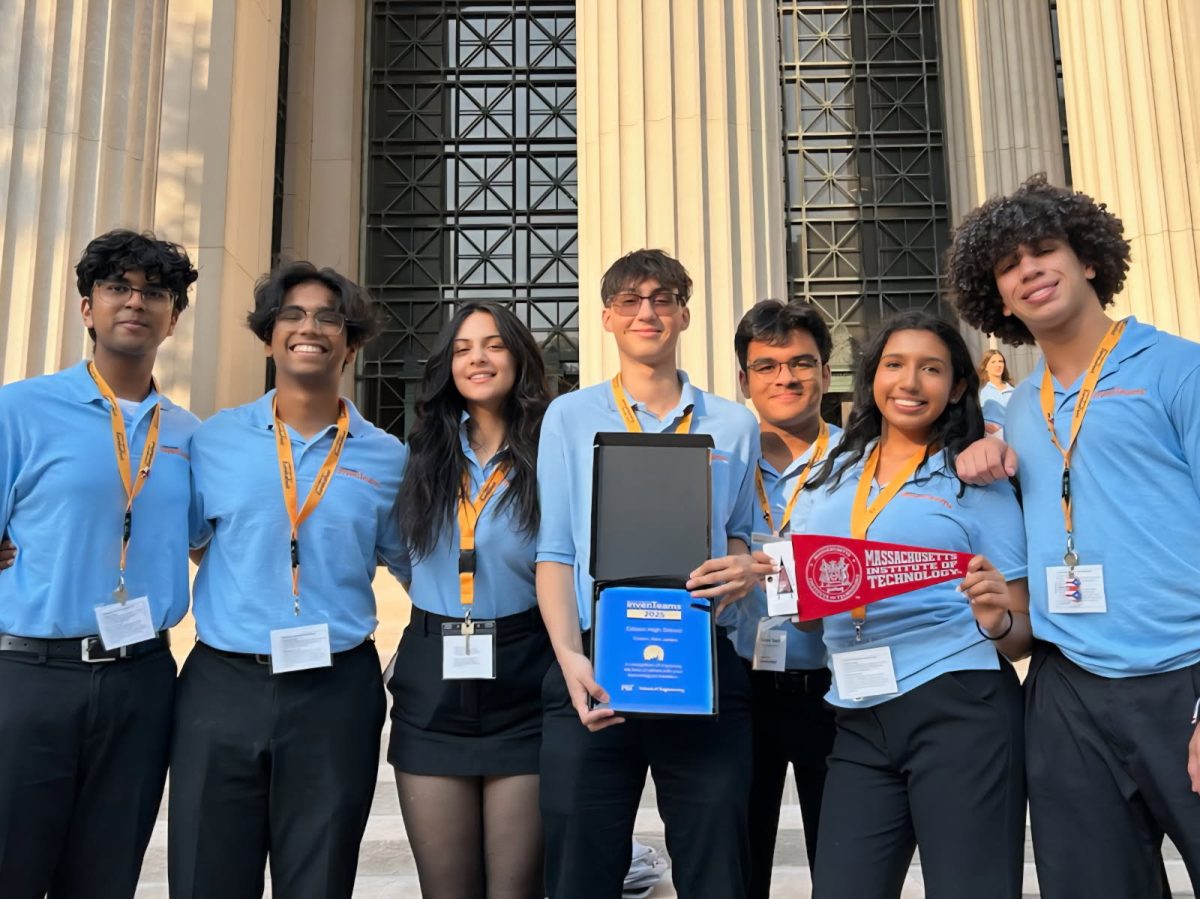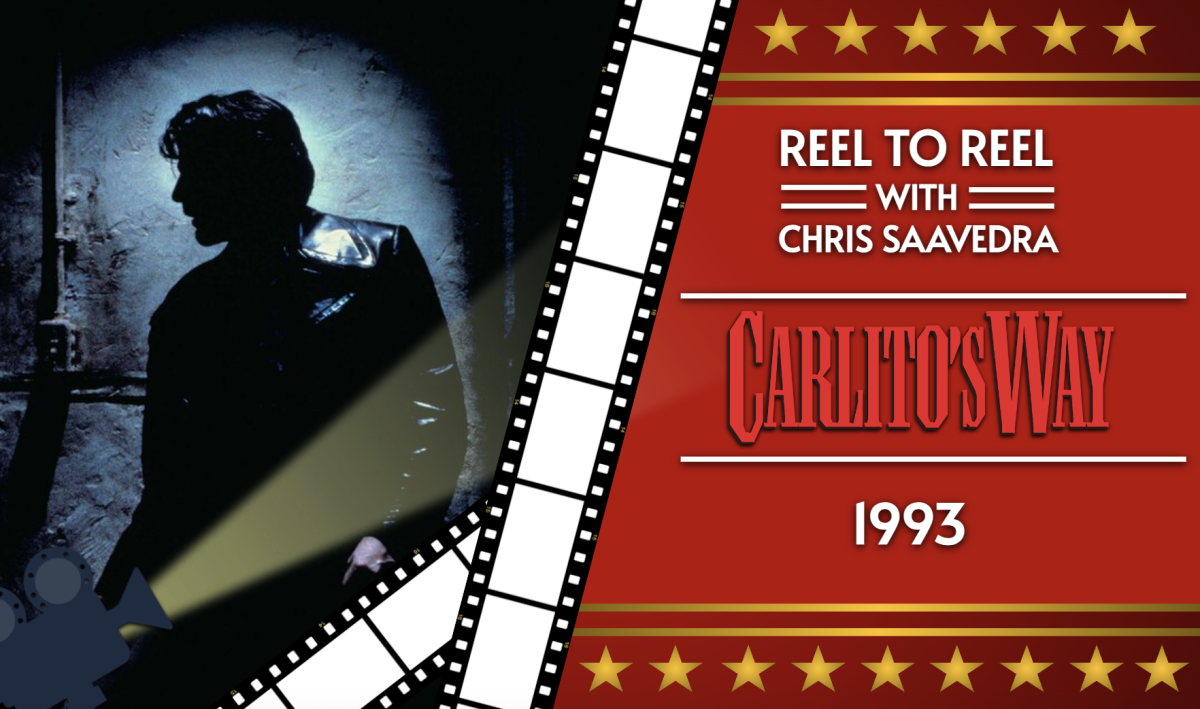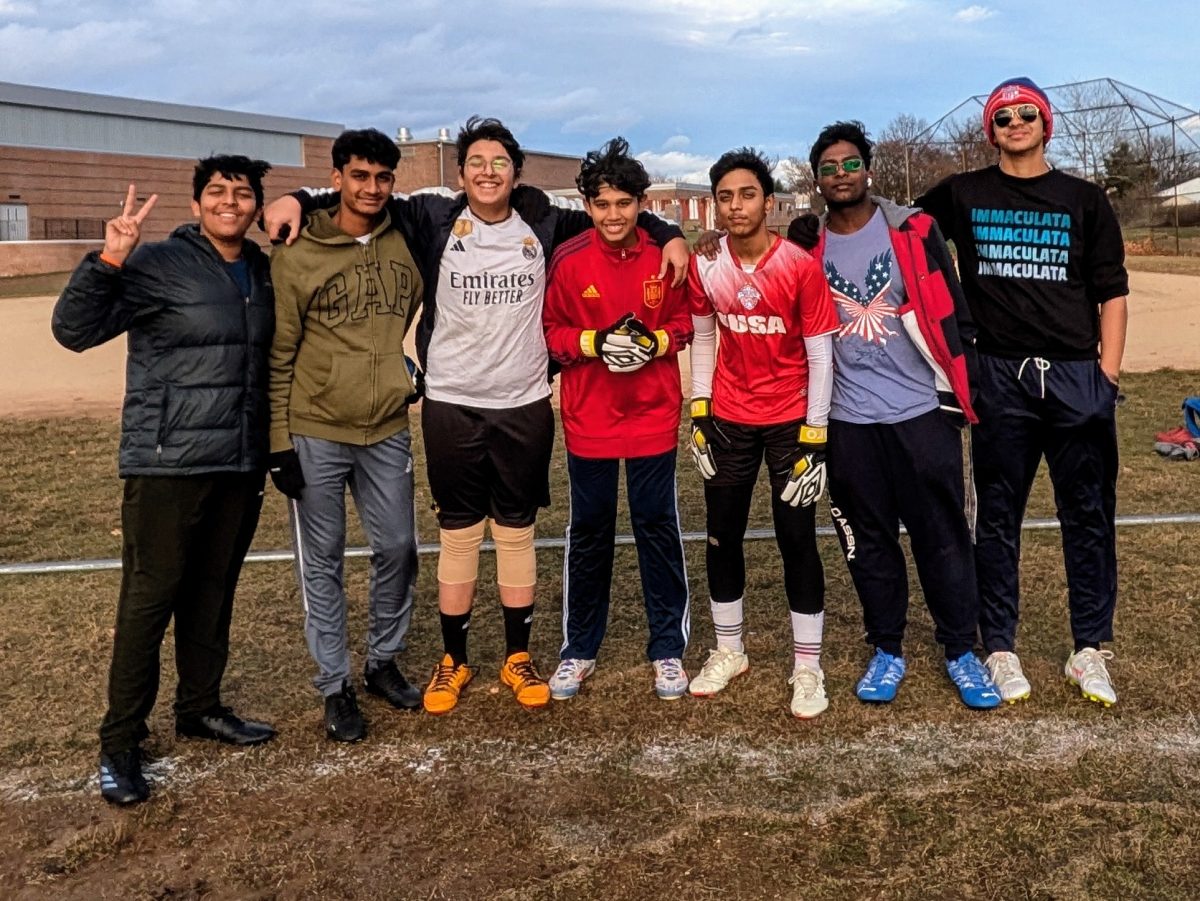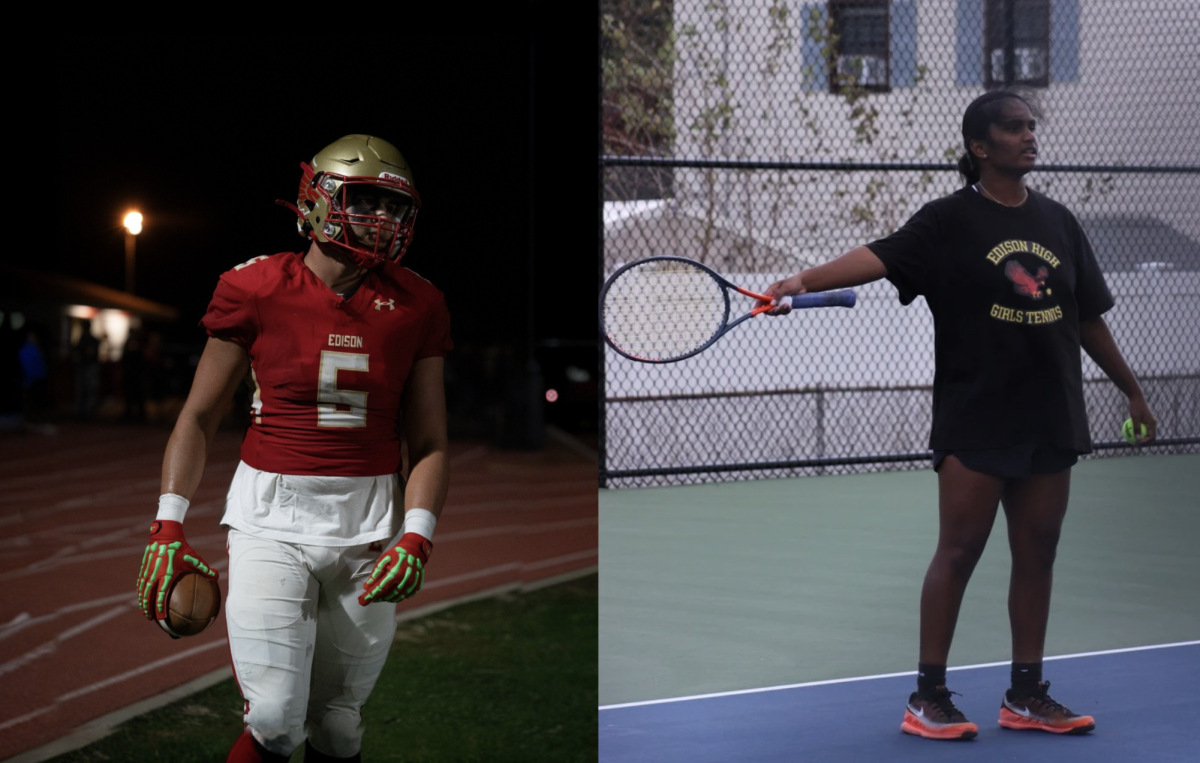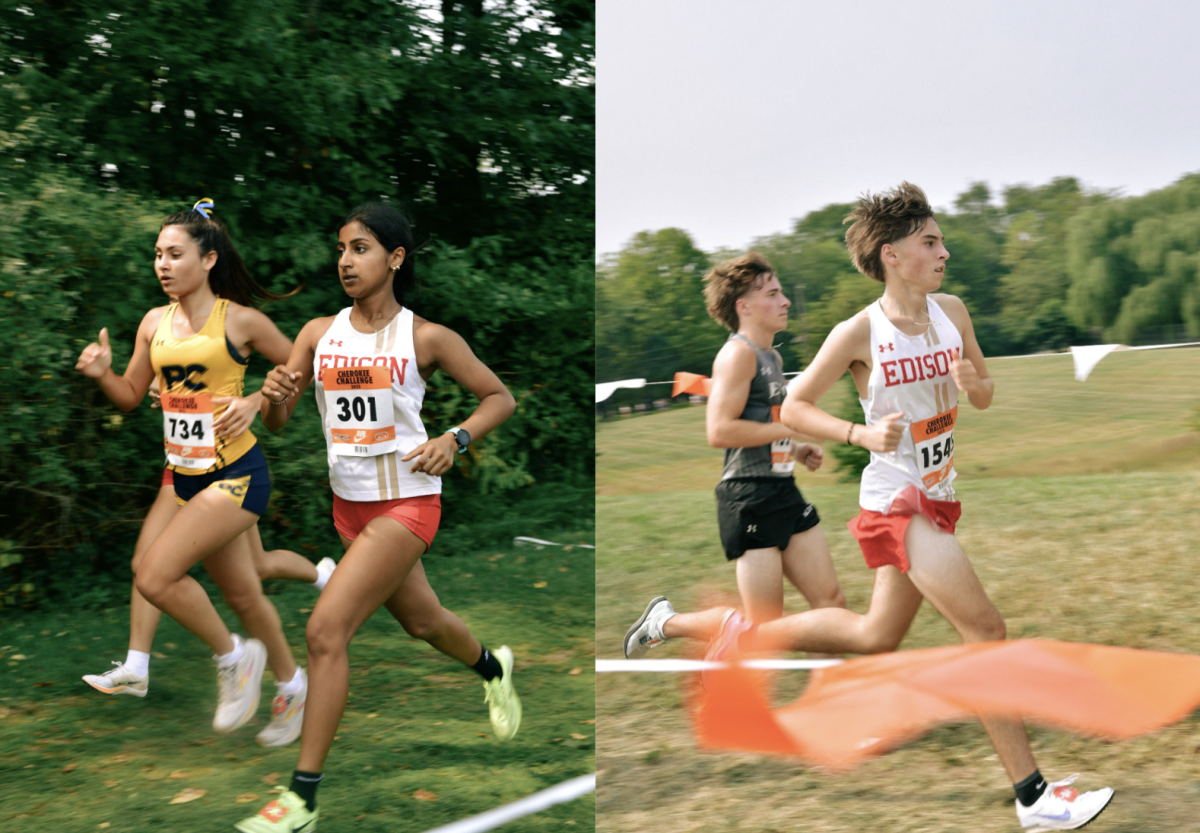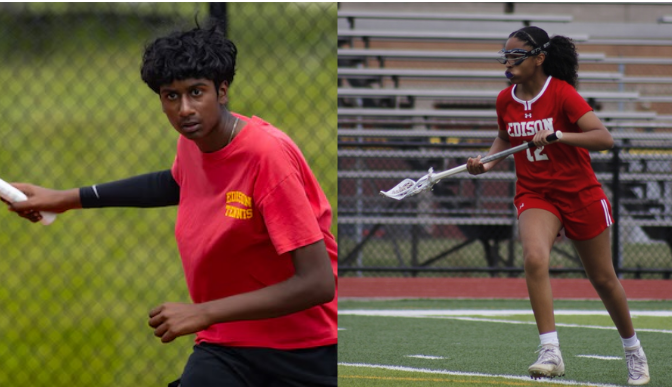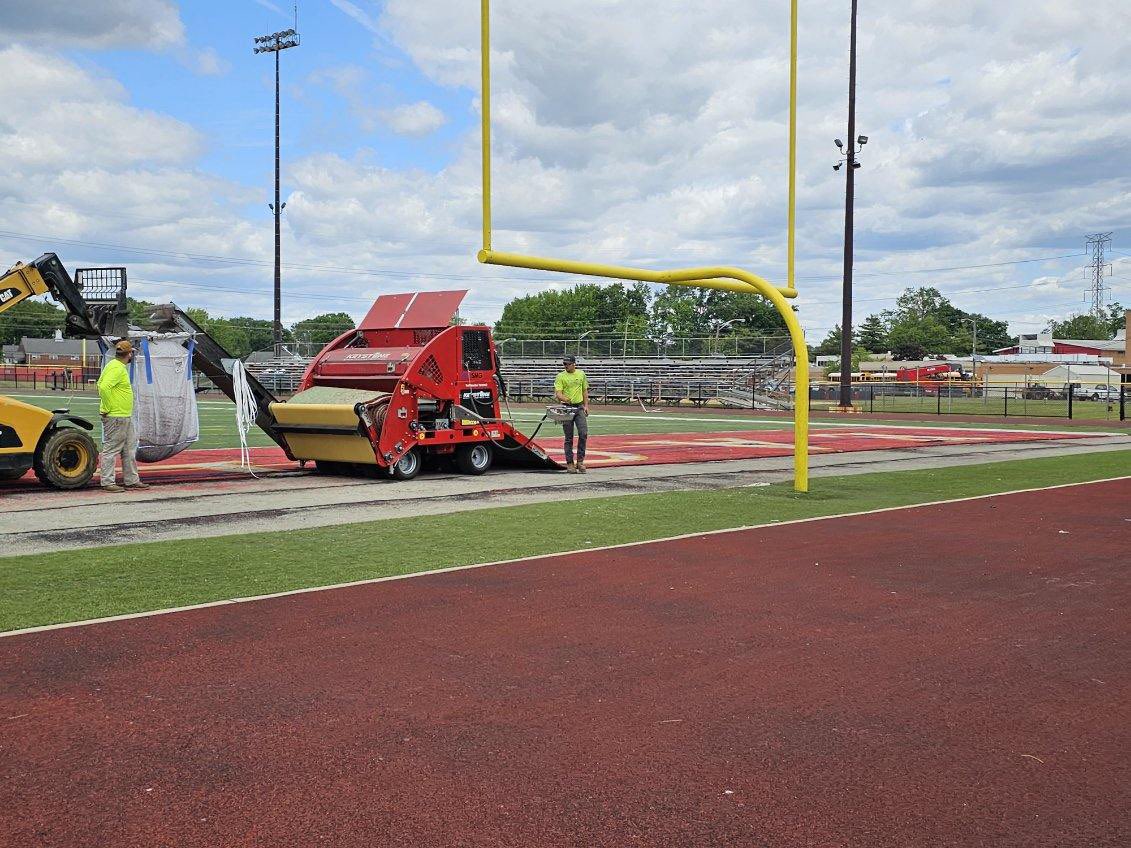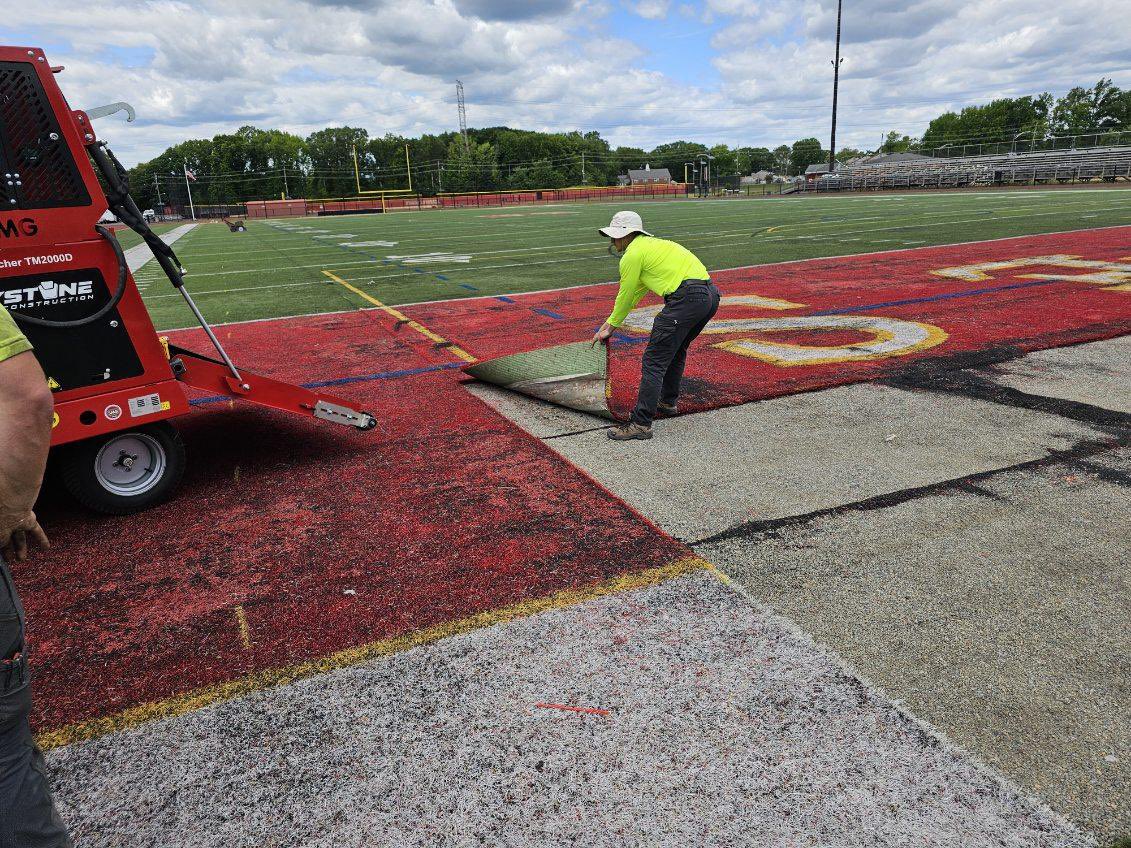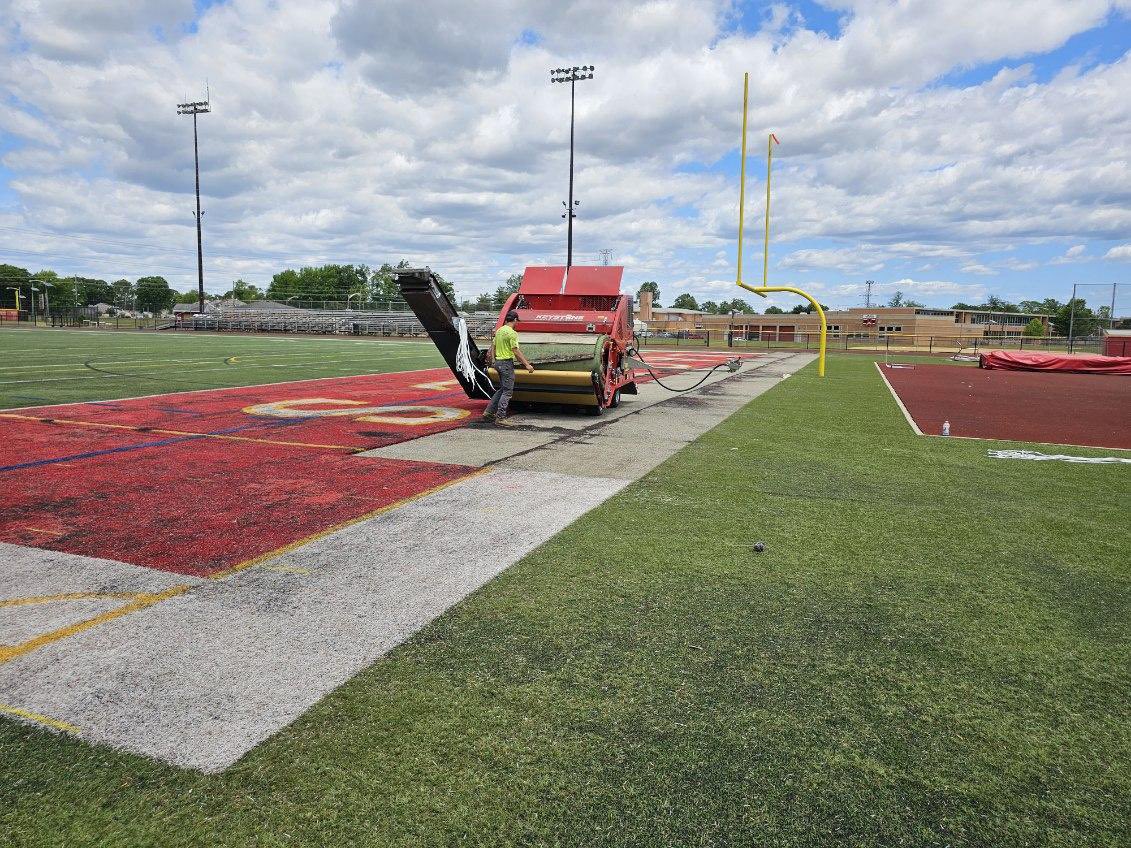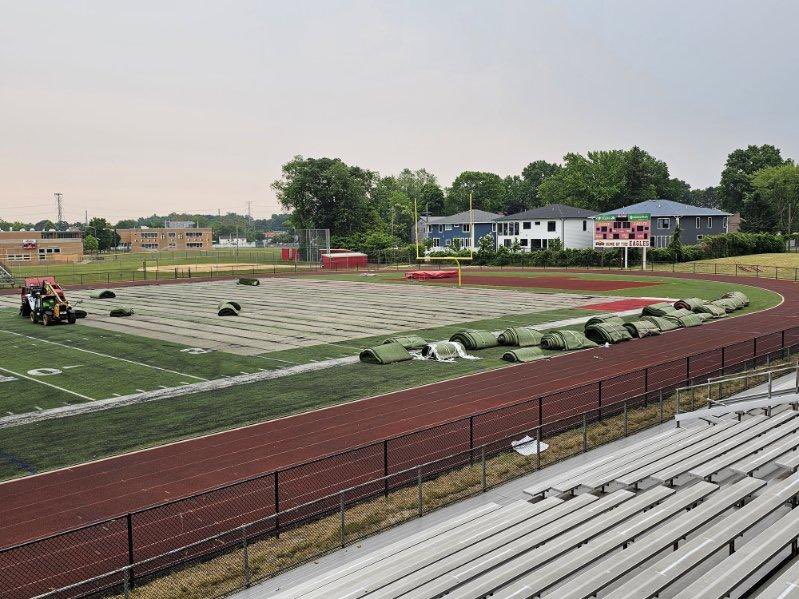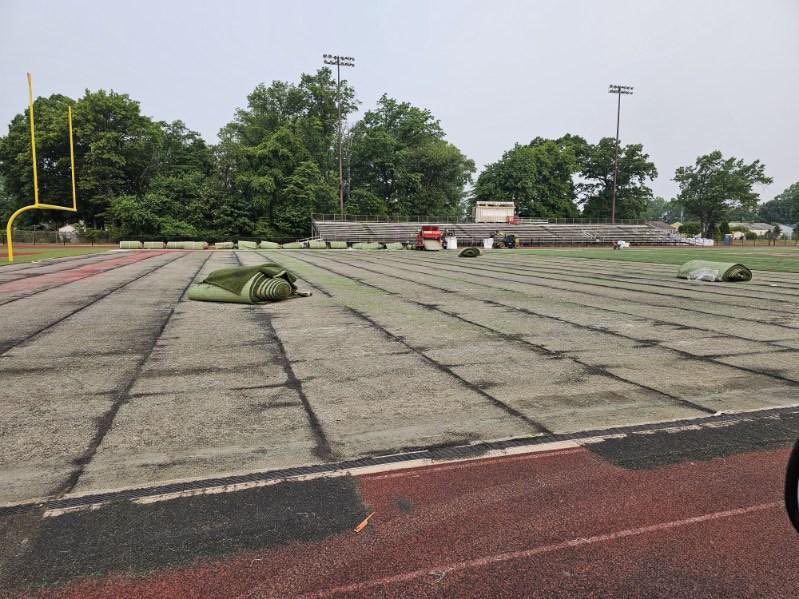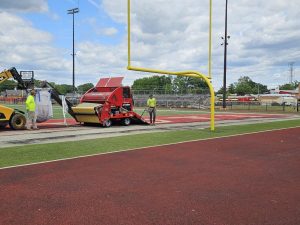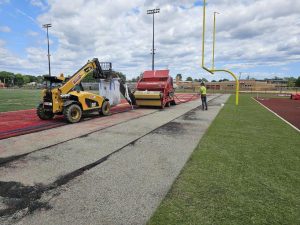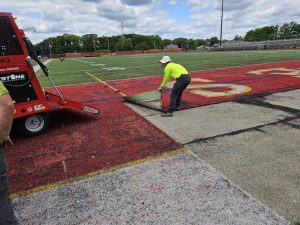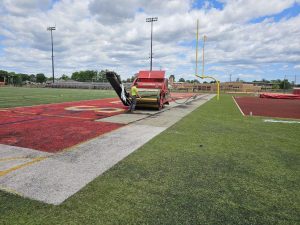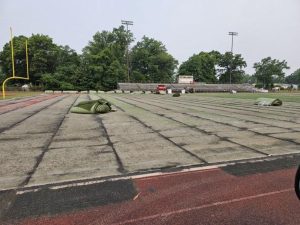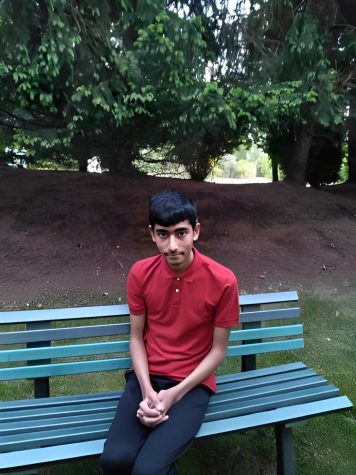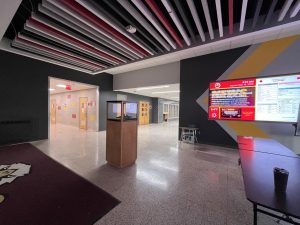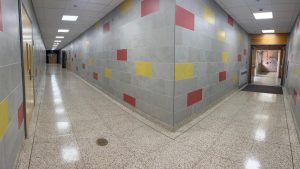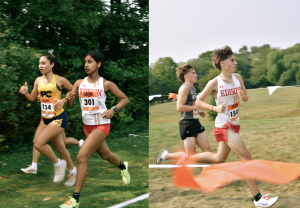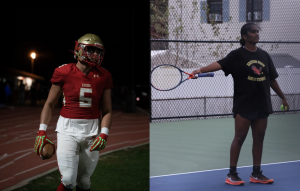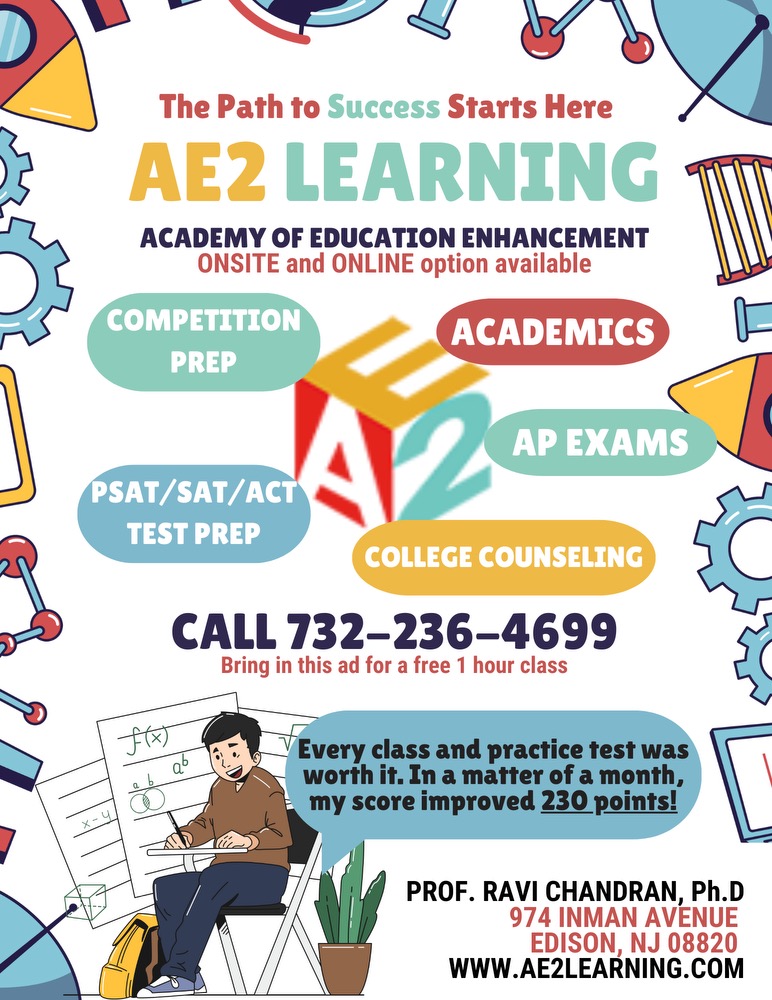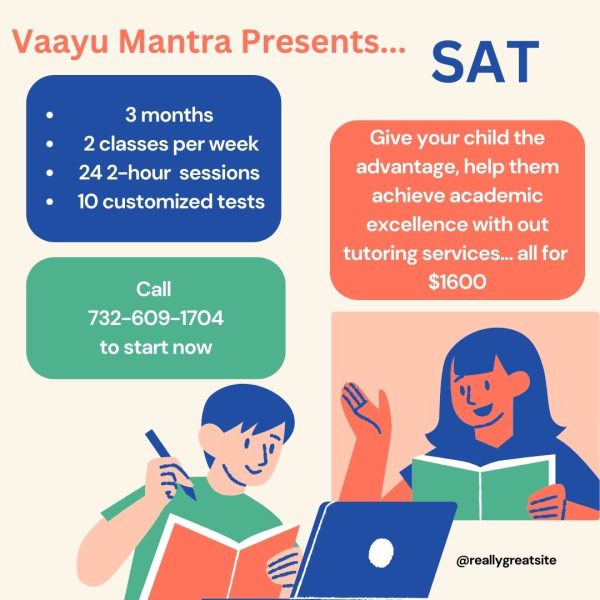The Grass is Greener
A Look at EHS’ New Turf
Mr. Matt Yascko
The athletic field at Drwal Stadium in the middle of turf refurbishment. The project is expected to be completed at the start of the new school year.
June 20, 2023
With the 2022–2023 school year winding down, it is time to take a look at ongoing construction and repairs around the nest. Chief among these projects is the work done to Edison High’s own sports turf.
Why is the turf being redone?
Located adjacent to the main Edison High building, the turf is the center of athletics activity around the school. Every year, it serves as the venue for grand events such as the Homecoming and Powderpuff football games. It has witnessed countless victories, roaring crowds, and intense rivalries over the years. Given its rich history as a source of pride and excitement for the Eagle (and larger Edison!) community, then, why is the turf being redone?
“Artificial turf fields have a lifespan, much like a car, computer, and any other kind of, you know, what the economists would call ‘durable goods,’” said Edison High School principal Mr. Charles Ross. “Ours was about a year or two years past its lifespan, and an older form of turf that retained heat. Anyone who has ever walked out and played gym there, or gone out for an evacuation drill, knows that they bring those little black pebbles with them everywhere, and those little fibers from what’s left from the rug part of it.”
The turf is also utilized frequently by various groups in the community.
“Our field underwent constant usage from sports like football, soccer, and lacrosse, as well as from gym classes and various local township events,” added Eagles varsity football Head Coach Mr. Mathew Yascko. “The field was worn down and in need of repair.”
From having to accommodate games, practices, and community events, the field’s once lush-green surface had become worn and frayed, resulting in a less-than-ideal, and potentially unsafe, playing surface.
“Our field had outlived its usage, so it was time for a refresh,” said Ross.
What benefits come from artificial turf?
The current turf was installed in 2012. Prior to that, the football field at EHS was natural grass, which had its limitations.
“When we had grass twelve years ago, fewer people got to use it than when it is turf,” said Ross. He further explained that following a downpour, the muddy grass field became unusable for some time after. The physical education classes, football team, and marching band would then have to play and practice in the gym instead. With artificial turf, the field remains playable even after inclement weather the same or previous day, lessening the disruption to event and game schedules.
In addition, the replacement of the turf will ensure that environmental and player safety protections are kept up-to-date. Synthetic turf also requires less water and eliminates the need for pesticides and fertilizers, thereby minimizing long-term maintenance costs.
What do students and non-football athletes have to gain from the new turf?
Looking at the various grid lines and yard markers on the turf, students may associate the reconstruction of the turf with the Eagles football program, which had its most successful season in decades this past season. But does this association really exist?
“The project did not have anything to do with the football team’s success,” said Yascko. “It was simply time for it to be redone.”
That being said, how will the new turf benefit the students and non-football athletes at Edison High?
“You know, we’re always looking to upgrade the facilities here,” said Eagles Athletic Director Mr. David Sandaal ‘90. “The baseball field was done in 2020, and we’re constantly upkeeping both our gymnasiums. I thought [the turf] was a component that needed to be done, and I think it will benefit all of our teams, and our physical education classes—not just the teams that use the turf, not only the inter-scholastic teams, but our physical education programs will greatly benefit from the new turf as well.”
Ross added that “in the future, we may end up using it for graduations or other types of large public events, so this is one of those things that just benefits a great number of people.”
How much does the project cost?
When Edison High’s first turf was incorporated twelve years ago, according to Ross, the project required a large excavation and foundations for liquid drainage, as well as a focus on ensuring the new turf would not interfere with pre-existing environmental regulations. By contrast, this year’s project only required the replacement of the turf’s rug and pebbles, as well as flattening to create a smooth terrain for running and walking.
As a result, this year’s project was a lot cheaper comparatively. According to Ross, the renovation for both the track and the turf cost around $600,000, making the total comparable to that of projects like the E3 Arena ($400,000). Minutes from the February 23 Board of Education Caucus Meeting put the total cost of the project at $976,130, which takes into account the additional cost associated with labor and materials. The turf was incorporated by Keystone Sports Construction, and the purchase was mediated by NJ EdgeMarket.
When will the project be finished?
Students may be wondering when the project can be expected to be completed, as well as what happens to the old turf after construction is complete.
“We’re hopeful for completion by August 15, if not August 30. Our first couple of games are on the road with football, but we should be good for September 1 to start hosting events,” said Sandaal.
In addition, the administration worked to ensure that the old turf would be effectively repurposed.
“The old turf will be ground up and recycled for future projects all over the state,” added Yascko. “As far as being recurring, turf fields generally have a lifespan of ten to twelve years, so I would imagine in another decade or so there will be plans to replace it once again.”
The project has also not been delayed by the recent arrival of smoke from wildfires in Northeastern Canada, according to Yascko.
“We were in a downtime, when we were waiting,” said Ross. He added that Keystone Sports Construction “did our demolition first and then went to do the demolition at the J.P. field, so they were kind of in a holding pattern, and [the weather] didn’t impact us at all.”
Why wasn’t the project completed over the summer?
Unlike most major projects undertaken by the district, the construction of the new turf began in early June, while normal school function continued, including outdoor physical education classes.. This created a day during which all physical activity, such as walking around the track and playing turf games, was moved to the adjacent Mike Krychowecky Field. Why was it that the project was started in early June, as opposed to July or August?
“Just with the tight window of the summer, we allowed, myself and Mr. Ross, an agreement that the disruptions to physical education were minimal, being only maybe a day or two before physical education shut down,” said Sandaal. “We actually targeted that date, Monday, June 5, as the start date. But again, with waiting until July 1, or waiting until the end of school, you run the risk of not being done for September for when school starts back up again with the students.”
The project was deliberately scheduled to begin at the end of the school year to minimize disruptions to sports teams and classes, while also allowing the school to gain an early start with construction to ensure readiness for the fall.
“The main idea is, in school construction projects, like artificial turf fields, everybody wants it done over the summer,” added Ross. “So, we waited until we were done with the majority of our sports seasons before we started doing the demolitions. We wanted to wait until after that, but then we also wanted to be the first in line. If we just said we wanted to do [the project] over the summer, the next thing you know, we get delayed three weeks, and we don’t have the field until October–November, in which case we lose out.”
What can students and staff look to get out of their new field?
All in all, the new turf looks to provide a needed upgrade to a heavily-used portion of the school. But exactly how much will the project provide a boost to athletes around the nest?
“You always want to upgrade your facilities and look as best as you can,” said Sandaal. “When we had our historic football run and we went on the road in the playoffs, it seemed like everyone had nicer turf than we did. And again, our turf was eleven years old, and that was to be expected, but I think that—you know, there’s an old saying that goes, before you can be a winner, you gotta look like a winner, and I think we’re going to look like a winner with this new turf.”
Yascko added how the upgrade would “make our complex one of the best in the area, and along with the baseball field, make the school look much better.”
Irrespective of its athletics upgrades, how does the field represent a new “pride” for the greater Eagle community?
“You know, we’ve got the best students, and having the best is important, whether it’s a field or whether it’s a classroom,” said Ross. “It’s why we’re always buying new furniture, we’re trying to get new bathrooms built, why we’re looking at ways to ease the overcrowding. Edison students are the best and they deserve the best. So I think it’s another case of when people come here, they know that this is a high-quality place, that we value our students, we value our student athletes, and that it was something good.”
Ross further explained that the physical improvements made to school facilities exemplify the school administration’s commitment to excellence at Edison, and demonstrates its pride in creating an environment in which students can truly thrive.
“We want people, when they’re coming around, to come and visit us, to see that we have things,” said Ross. “Even though we’re small in acreage, the things that we have, we take care of them, we make sure that they’re top-notch.”













